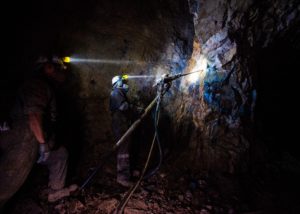The growing electricity crisis in China, a result of the lack of coal and a high post-pandemic demand for energy, is forcing the rationing of electricity throughout the country, causing industries to close and threatening to derail China’s economic growth, an adverse scenario for Latin America.
“It is the worst electricity crisis China has faced in a decade,” the U.S. magazine Foreign Policy reported on October 7, 2021. “The immediate cause is that China is still highly dependent on coal, which provides 70 percent of the country’s power generation.”
China’s main focus on construction and heavy industry in the aftermath of the pandemic, which increased the demand for coal by 11 percent in the first half of 2021, triggered the crisis, Foreign Policy added.

As a consequence, the collapse of the financial bubble involving “one of the largest construction companies in China [Evergrande], reads as a warning sign for some countries in Latin America with economies linked to Asia,” the Spanish newspaper El País reported on September 21.
“China has become one of the main trading partners of Latin American economies, and if the Chinese economy stagnates, slows down, or faces a crisis, it will impact Latin America,” Luciano Rossano, market strategist for Banco Muzho do Brasil, told El País.
In Brazil, the Chinese crisis is being felt by the agribusiness, due to the high prices of fertilizers and glyphosate, which are the basis of Brazilian agriculture and are purchased from China, the news portal BloombergLínea explained. Brazil “is the world’s leading exporter of soybeans, sugar, and coffee and the second largest supplier of corn, and needs to buy nearly 80 percent of its fertilizer needs,” the news portal reported.
On October 7, Brazilian President Jair Bolsonaro declared that his country will face “food supply problems in 2022, due to the energy crisis in China,” the Brazilian newspaper Folha reported.
Chile exports copper to China, Brazil exports iron ore, and Colombia exports oil; Peruvian mineral exports to the Asian country, including copper, increased 62 percent in the early months of 2021, compared to the same period in 2020, El País reported. “This makes them dependent on an economy that is facing problems.”
On October 13, the World Energy Trade site reported that the Chinese government had authorized coal plants to charge some of their customers for electricity at market prices, in order to boost coal production and manage electricity at industrial plants.
It also ordered coal miners to increase production, raising doubts about China’s pledges to transition to “green” energy and reduce its peak carbon emissions by 2030, the British newspaper Financial Times reported on October 10.









